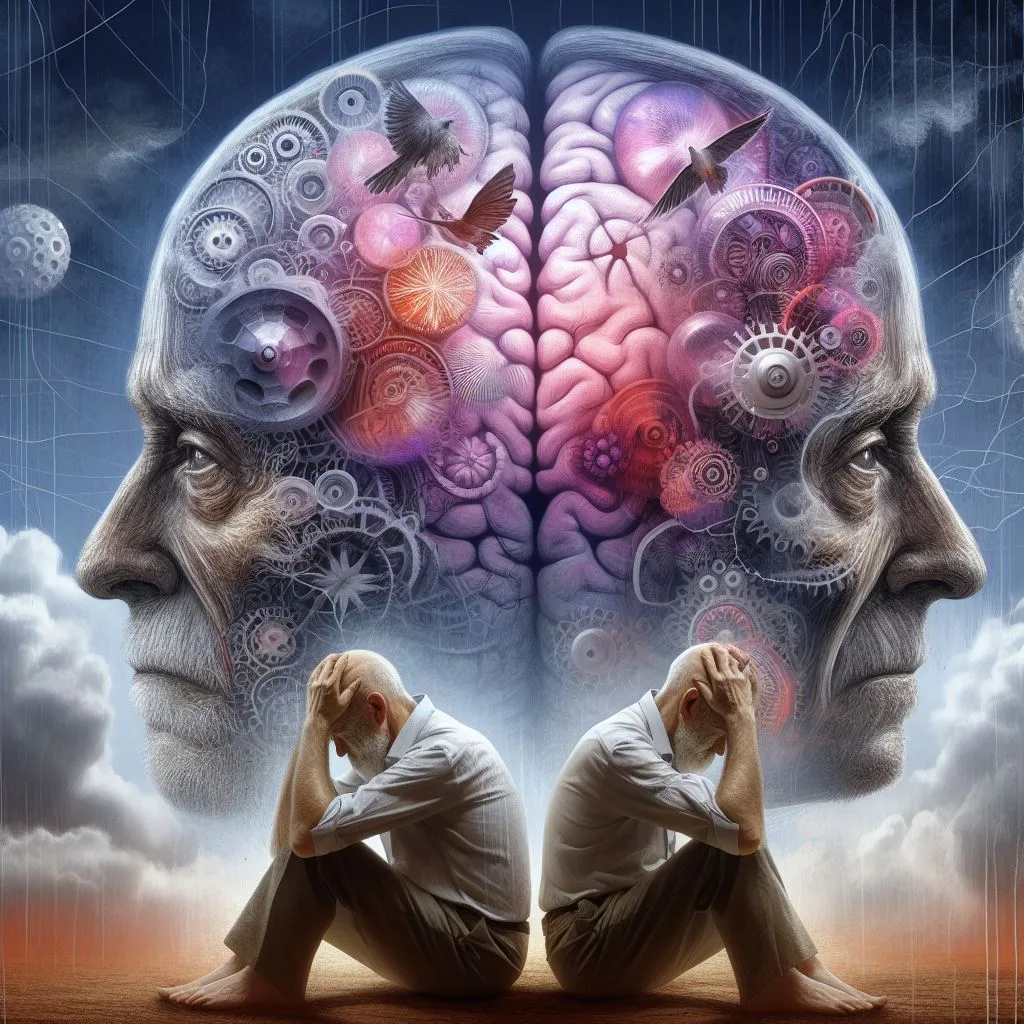
Psychological factors in pain
This article discusses the psychology of pain, which is a complex and subjective phenomenon that involves not only physiological but also psychological factors. Psychological factors can influence how individuals perceive, cope with, and respond to pain, and they can also undermine the effectiveness of the medical model that focuses on the biological causes and treatments of pain. Some of the psychological factors that affect pain perception are attention, emotion, meaning, attitudes, catastrophic thinking, expectations, and coping strategies (Lumley, 2011; Corns, 2017).
Attention refers to the degree of focus on the pain sensations and their implications. Paying more attention to pain can increase its intensity and unpleasantness, while distracting oneself from pain can reduce it.
Emotion refers to the affective reactions to pain, such as fear, anxiety, anger, sadness, or depression. Negative emotions can amplify pain perception and interfere with pain management, while positive emotions can buffer pain perception and facilitate coping.
Meaning refers to the interpretation and evaluation of pain in relation to one’s life goals, values, and beliefs. Pain can be perceived as a threat, a challenge, or an opportunity, depending on how it affects one’s sense of self, identity, and future.
Attitudes refer to the cultural and social norms and expectations regarding pain expression and behaviour. Different cultures may have different views on pain tolerance, stoicism, or catastrophizing, which can influence how individuals communicate and cope with pain.
Catastrophic thinking refers to the tendency to imagine the worst possible outcomes of pain, such as disability, loss of function, or death. Catastrophizing can increase pain perception by enhancing fear and anxiety, and by reducing self-efficacy and problem-solving.
Expectations refer to the beliefs and predictions about the course and outcome of pain and its treatment. Expectations can have a placebo or nocebo effect on pain perception, depending on whether they are positive or negative.
Coping strategies refer to the cognitive and behavioural actions that individuals use to manage pain and its consequences. Coping strategies can be adaptive or maladaptive, depending on whether they reduce or increase pain perception and disability. For example, relaxation, exercise, and cognitive restructuring are adaptive coping strategies that can reduce pain perception and improve functioning, while avoidance, denial, and rumination are maladaptive coping strategies that can worsen pain perception and impair functioning.
The psychological factors described above can undermine the effectiveness of the medical model of pain by creating a vicious cycle of pain amplification, disability, and distress. The medical model of pain assumes that pain is a direct result of tissue damage or disease, and that it can be cured or alleviated by pharmacological or surgical interventions. However, this model ignores the psychological factors that modulate pain perception and behaviour, and that may interfere with the response to treatment. This means that the psychology of pain for the individual can become a key determining factor for recovery and long-term well-being.
For example, psychological factors may influence how patients adhere to medication regimens, how they perceive the benefits or side effects of treatment, how they cope with residual or chronic pain, and how they adjust to changes in their lifestyle or functioning. Moreover, psychological factors may contribute to the development or maintenance of chronic pain conditions that are not explained by identifiable tissue damage or disease, such as fibromyalgia or chronic low back pain. These conditions pose a challenge for the medical model of pain, as they require a biopsychosocial approach that considers not only the biological but also the psychological and social aspects of pain (Linton & Shaw 2011; Morris 1991).
Music therapy and pain
The psychology of pain is a complex and multidimensional phenomenon that involves sensory, cognitive, and emotional processes. Music therapy is a non-pharmacological intervention that can help alleviate the impact of pain by addressing various aspects of the pain experience. According to the cognitive vitality model (CVM), music therapy can enhance pain management by facilitating five cognitive mechanisms: musical integration, cognitive agency, emotional regulation, social connectedness, and meaning making (Howlin et al., 2022).
Musical integration refers to the degree to which music can provide an immersive and absorbing experience that diverts attention away from the pain.
Cognitive agency refers to having an increased feeling of control over the pain and its consequences.
Emotional regulation refers to the ability to modulate negative emotions and enhance positive ones associated with pain.
Social connectedness refers to the sense of belonging and support that music can foster.
Meaning making refers to the process of finding purpose and value in the pain experience and its implications for one’s life.
Music therapy can incorporate a range of activities and approaches that are designed to keep in mind the individual experiences of the people with pain. It can include music listening and discussion, playing precomposed music, improvisation, songwriting, singing, and a range of other musical activities (Pain UK, 2015). Music therapy can also be tailored to the preferences and needs of each person, as different types of music may have different effects on pain perception and management. For example, some people may prefer low-energy music that can induce relaxation and reduce stress, while others may prefer high-energy music that can boost mood and motivation (Lee, 2016).
Music therapy has been shown to have important benefits for pain management in various settings and populations. Systematic reviews have demonstrated that music therapy can reduce pain intensity, decrease pain interference, improve pain related self-efficacy, reduce analgesic use, enhance mood, increase perceived support, and provide procedural support (Bradt et al., 2021; Klassen et al., 2008; Lee, 2016; McConnell et al., 2016; Yinger & Gooding, 2015). Music therapy has also been found to improve chronic pain management outcomes such as pain interference, pain related self-efficacy, and pain intensity (Bradt, 2015; Lee, 2016). Music therapy may be especially beneficial for people with cancer (Bradt et al., 2021), palliative care and hospice patients (Gallagher et al., 2017; Gutgsell et al., 2013; McConnell et al., 2016), and burn patients (Fratianne et al., 2001; Tan et al., 2010; Whitehead, Pleaux et al., 2009).
Some quotes from people who have used music therapy for pain management illustrate its positive effects:
“Music helps me forget about my pain. It takes me to another place where I feel calm and happy.” (Patient with chronic back pain)
“Music gives me a sense of control over my situation. I can choose what I want to listen to or play depending on how I feel. It makes me feel empowered.” (Patient with rheumatoid arthritis)
“Music helps me cope with my emotions. Sometimes I feel angry or sad because of my pain. Music helps me express those feelings and release them.” (Patient with fibromyalgia)
“Music connects me with other people who understand what I’m going through. It makes me feel less alone and more supported.” (Patient with cancer)
“Music helps me find meaning in my pain. It reminds me of what matters most in life and what I can still do despite my pain.” (Patient with terminal illness)
In conclusion, music therapy is a valuable intervention that can help people with pain cope better with their condition by addressing various psychological aspects of the pain experience. Music therapy can enhance pain management by facilitating musical integration, cognitive agency, emotional regulation, social connectedness, and meaning making.
References
Bradt J., Dileo C., Magill L., Teague A.K. (2021). Music interventions for improving psychological and physical outcomes in cancer patients. Cochrane Database Syst Rev.;2:CD006911.
Bradt J. (2015). The effects of music entrainment on postoperative pain perception in pediatric patients. Music Med.;7(2):27–35.
Corns J (2017). The social dimensions of pain: How do psychological factors influence interpersonal aspects of chronic pain? In: Corns J (ed) The Routledge Handbook of Philosophy of Pain (pp 247258). Routledge.
Fratianne R.B., Prensner J.D., Huston M.J., Super D.M., Yowler C.J., Standley J.M. (2001). The effect of music-based imagery and musical alternate engagement on the burn debridement process. J Burn Care Rehabil.;22(1):47–53.
Gallagher L.M., Lagman R., Rybicki L. (2017). Outcomes of music therapy interventions on symptom management in palliative care: a systematic review. J Music Ther.;54(4):478–506.
Gutgsell K.J., Schluchter M., Margevicius S., DeGolia P.A., McLaughlin B., Harris M., Mecklenburg J., Wiencek C. (2013). Music therapy reduces pain in palliative care patients: a randomized controlled trial. J Pain Symptom Manage.;45(5):822–831.
Howlin C., Walsh R., D’Alton P., Rooney B. (2022). How do people with chronic pain choose their music for pain management? Examining the external validity of the cognitive vitality model. Front Psychol.;13:969377.
Klassen J.A., Liang Y., Tjosvold L., Klassen T.P., Hartling L. (2008). Music for pain and anxiety in children undergoing medical procedures: a systematic review of randomized controlled trials. Ambul Pediatr.;8(2):117–128.
Lee J. (2016). The effects of music on pain: a meta-analysis. J Music Ther.;53(4):430–477.
Linton, S. J. & Shaw, WS (2011). Impact of psychological factors in the experience of pain. Physical Therapy 91(5):700711.
McConnell T., Scott D., Porter S. (2016). Music therapy for end of life care: an updated systematic review. Palliat Med.;30(9):877–883.
Pain UK. (2015). Could music therapy help you cope with pain? Retrieved from https://painuk.org/blog/2015/09/couldmusictherapyhelpyoucopewithpain/
Tan G.M., Tsao J.C.I., Craske M.G., Zeltzer L.K. (2010). Pain and anxiety control in pediatric burn patients: a randomized controlled trial comparing music to clown therapy. Burns.;36(5):646–651.
WhiteheadPleaux A.M., Baryza M.J., Sheridan R.L. (2009). The effects of music therapy on pediatric patients’ pain, anxiety, and immobilization behaviors during dressing changes following burn injury. J Music Ther.;46(3):191–210.
Yinger O.S., Gooding, L.F. (2015). The effects of music therapy on vital signs, feeding, and sleep in premature infants. Pediatrics.;135(5):906–915.

0 Comments